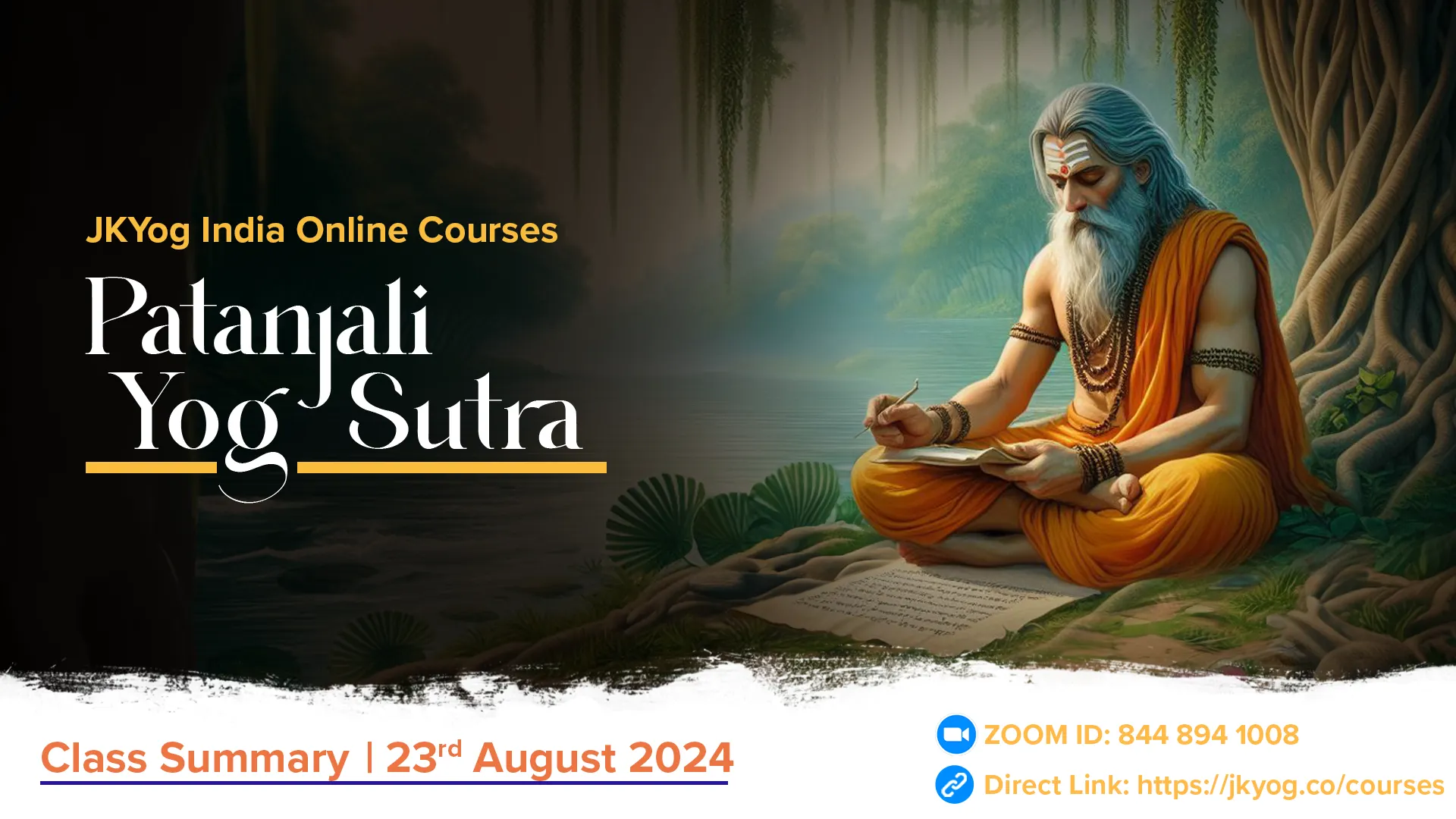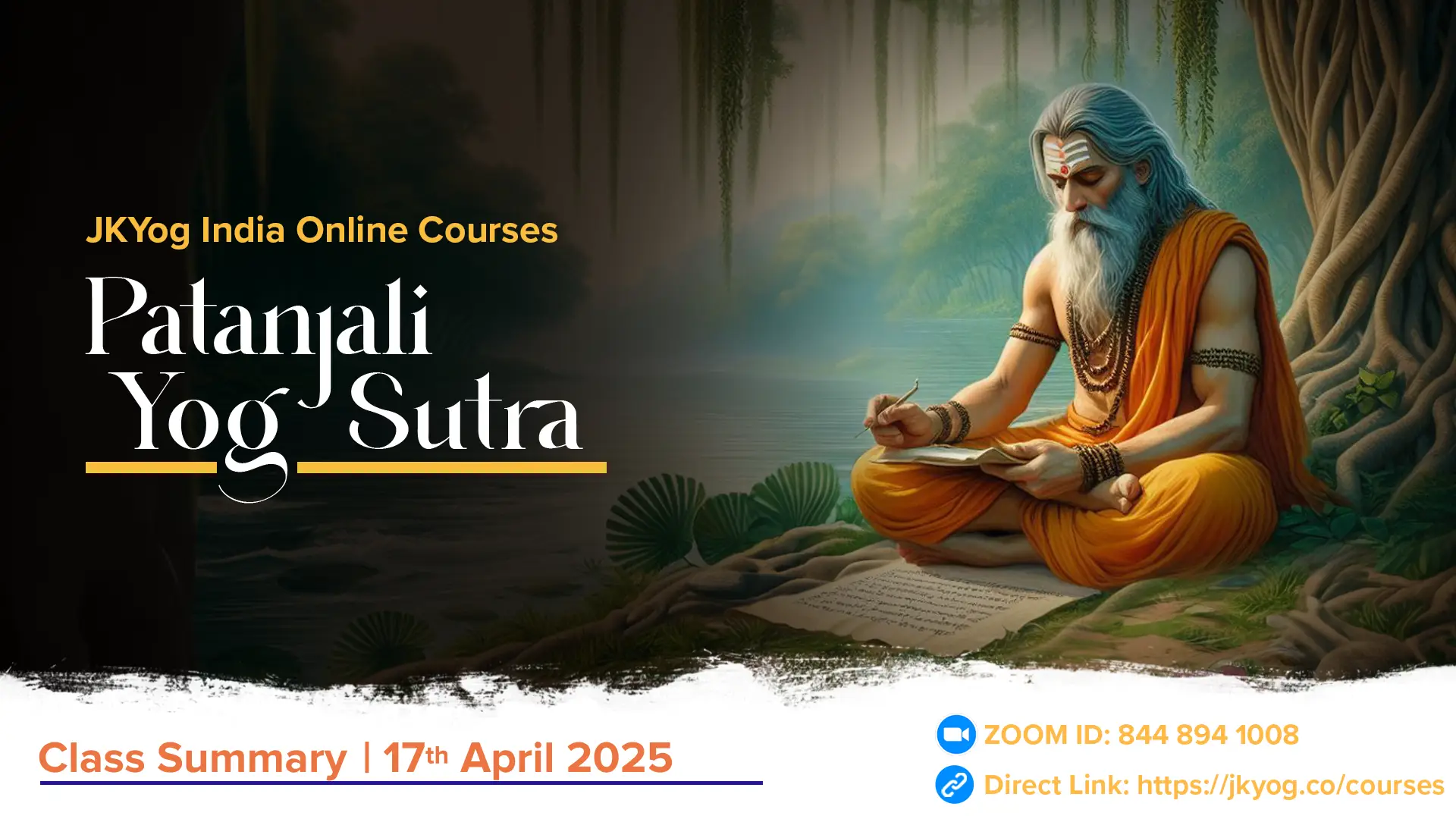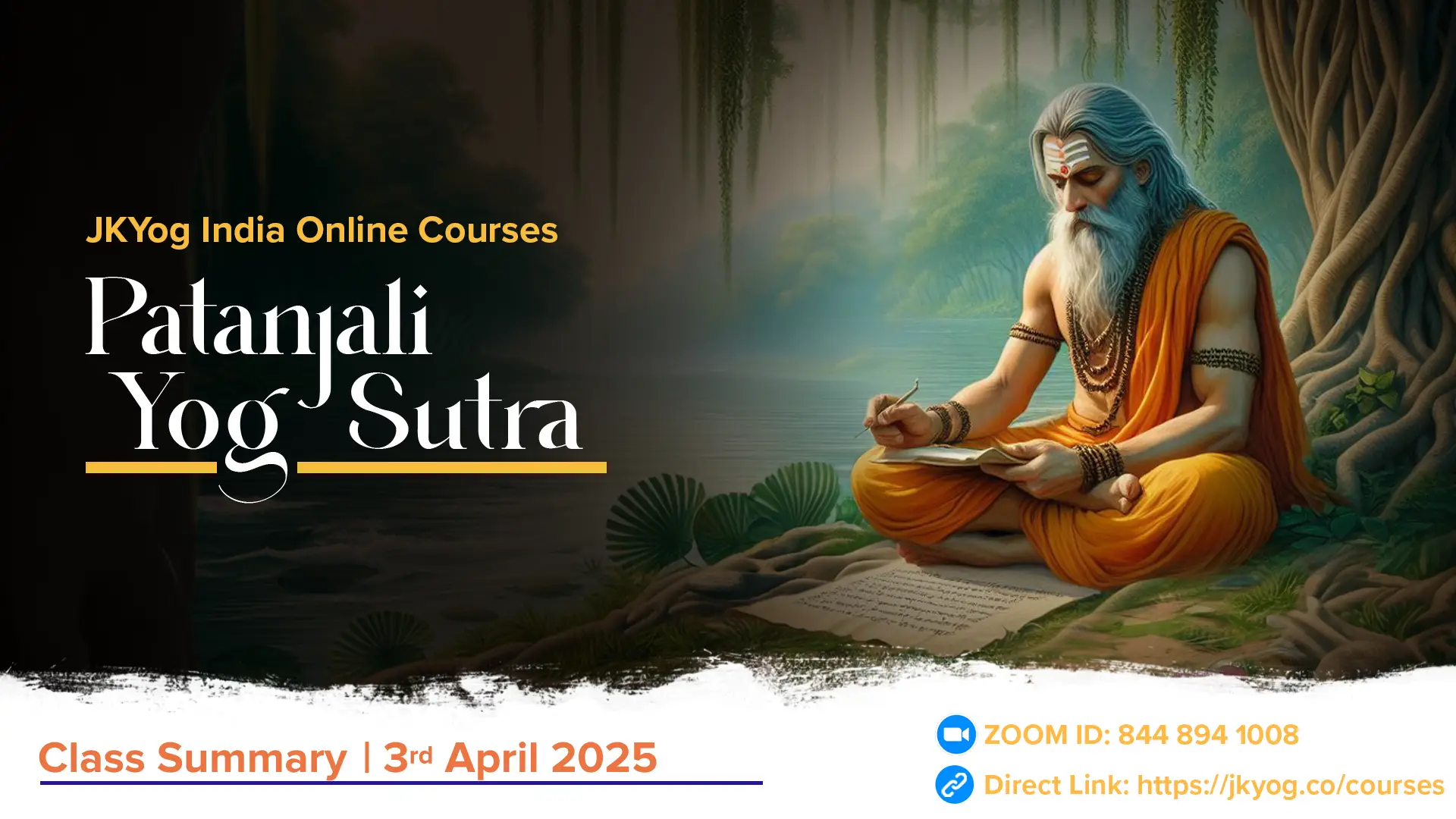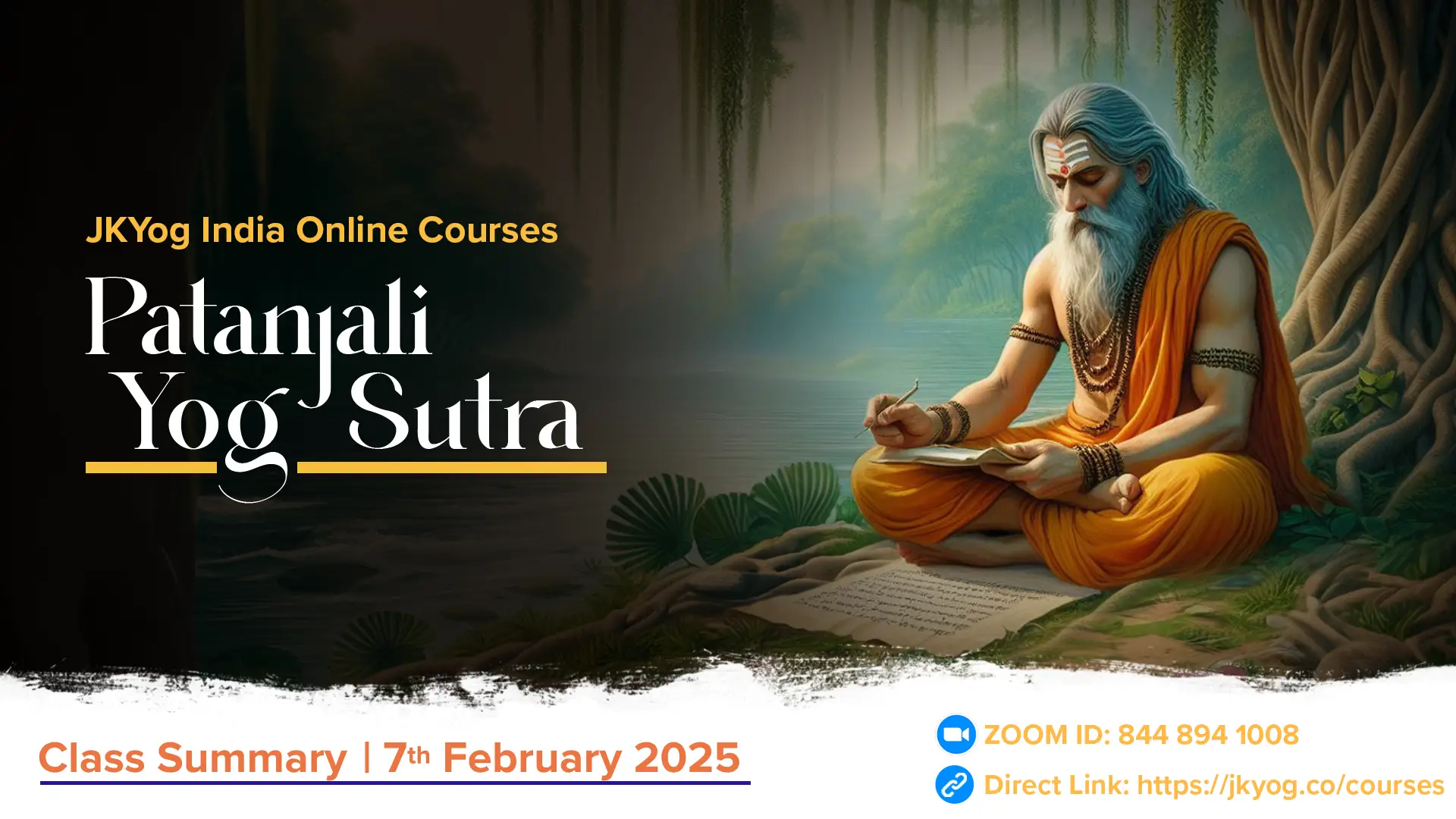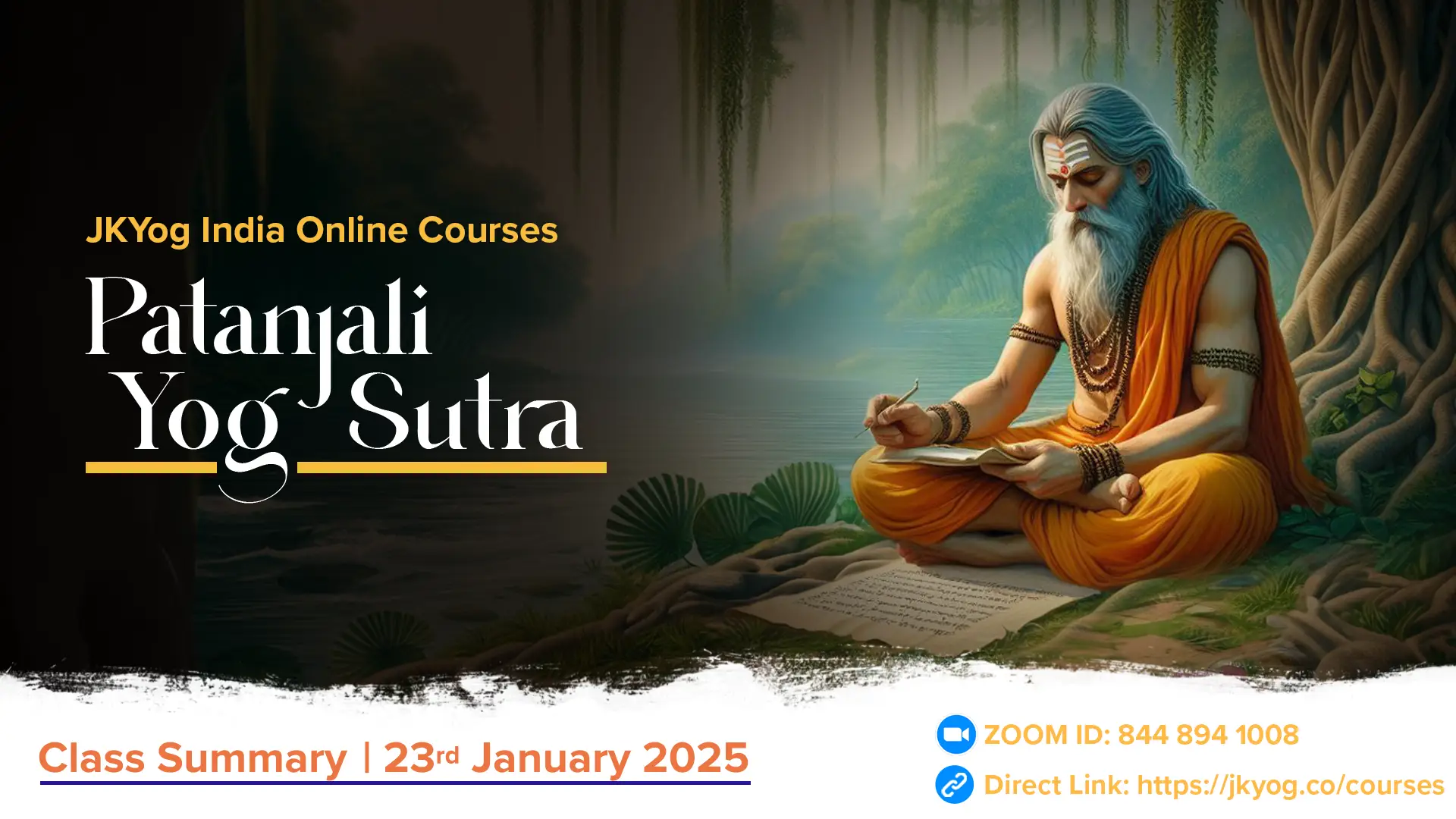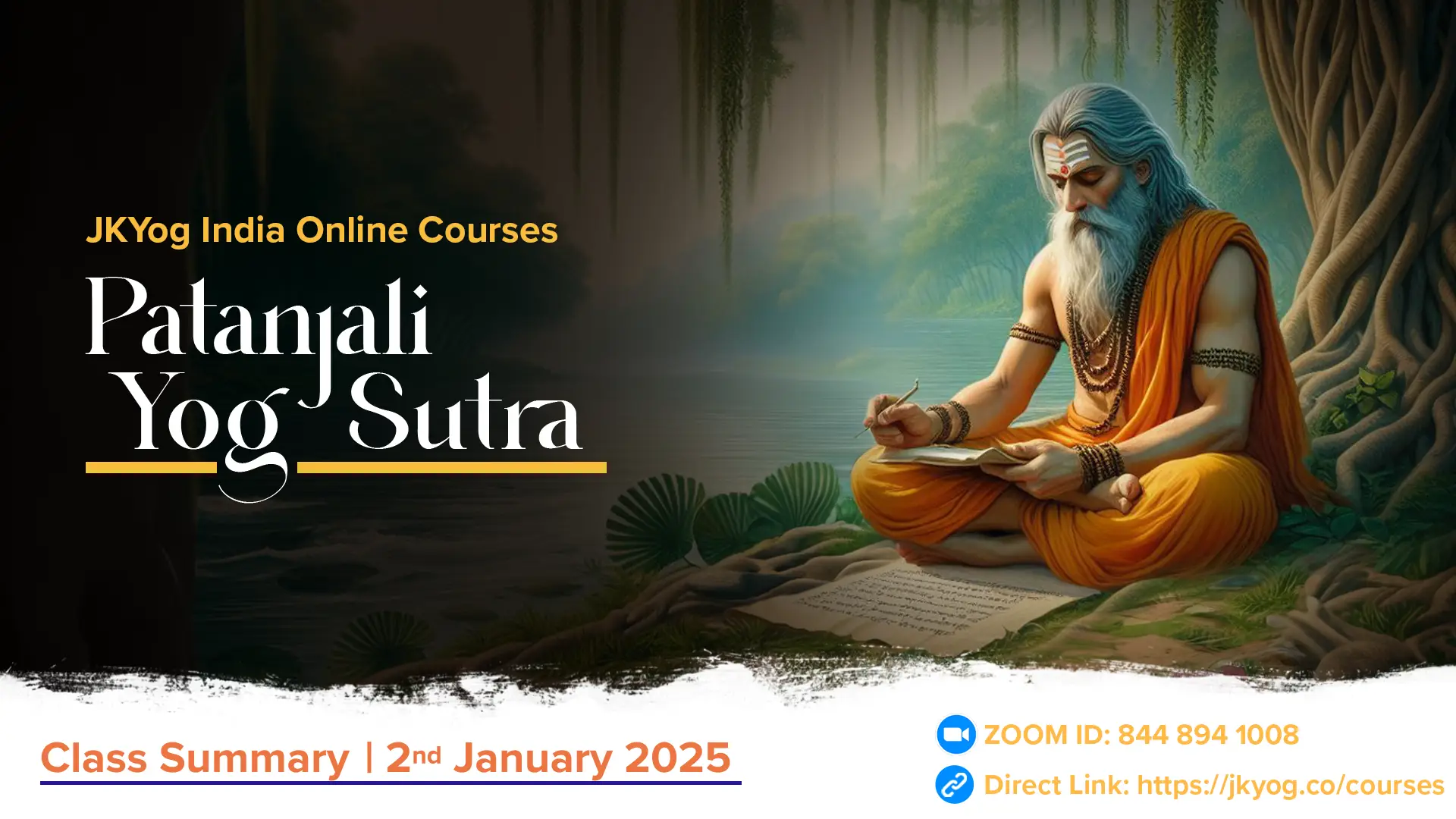प्रयत्नशैथिल्यानन्त्यसमापत्त्तिभ्याम् ||
prayatna-śaithilyānantya-samāpattibhyām || 2.47 ||
Translation: By slightness of effort and constant meditation on the Infinite (perfection in asanas can be achieved).
- This sutra gives us two ideas for perfecting the asanas. The first one is that one’s efforts to sit with a steady body should not involve straining into position since this would be counterproductive to the desired end, a firm but comfortable posture.
- Moderation is the watchword in yoga practice. Each body has its own limitations, including those imposed by age and other factors.
- Overstraining may lead to muscle pull, sprains, twisted limbs, and other complications.
- Only the person concerned can decide how far his/her body will permit and take the strain.
- When the limit is reached, one should stop immediately. The flexibility of the limbs differs from body to body. One should have one’s own model and not copy that of another.
Most of the asanas are done more mentally than physically.
The second suggestion given by the sage is meditation. We have often discussed that the mind is the master of the body. Although it is the body which performs the postures externally, the master giving the directions comes from inside is the mind. If the mind says that the body can be a little more flexible, the body obliges and tries. If the mind says, enough is enough, that is all—the body refuses to try further.
So, most of the āsanas are done more mentally than physically. Meditation, in conjunction with the practice of asanas, will help one achieve perfection in them. It is true not only with respect to the asanas but with respect to all activities in life. Meditate constantly on any goal you want to achieve in this world. It shall be achieved in due course, depending on your eligibility, your efforts, the intensity of your meditation, and, of course, God’s will.
Concentrating on the Kundalini
Swami Satyananda Sarasvati translates the present sūtra as, “By loosening of effort and by meditation on the serpent Ananta, āsana is mastered.” Commenting on this sūtra, he says, “The word Ananta means endless. It also means the snake on which Lord Viṣṇu rests in the ocean of milk. So, symbolically, Ananta means serpent, but in this sūtra, the serpent refers to the Kundalini Shakti. Therefore, the student should concentrate on the serpent power in the Muladhara Chakra, or any other method of concentrating on the kuṇḍalini should be employed.”
The Benefits of a few asanas were discussed.
- Bakasana: It increases endurance capacity. Strengthening your forearms, wrists, and shoulders.
- Bhujangasana: This yoga also relieves stress and fatigue, thus helping to open the chest and clear the passages of the heart and lungs.
- Dhanurasana: It provides an overall toned shape to the entire body.
- Garudasana: It enhances the sense of balance in the body.
- Halasana: Halasana promotes good digestion.
- Kurmasana: Kurmasana improves the functions of the respiratory and digestive systems.
- Makarasana: Makarasana can cure asthma, knee pain, and any lung-related issues.
- Matsyasana: Matsyasana tones the pituitary, parathyroid, and pineal glands.
Yoga practice can make us more sensitive to subtle sensations in the body. Paying attention to and staying with these sensations is one of the surest ways to steady the wandering mind.
Summary: JKYog India Online Class- Patanjali Yoga Sutra [English]- 23.08.2024

